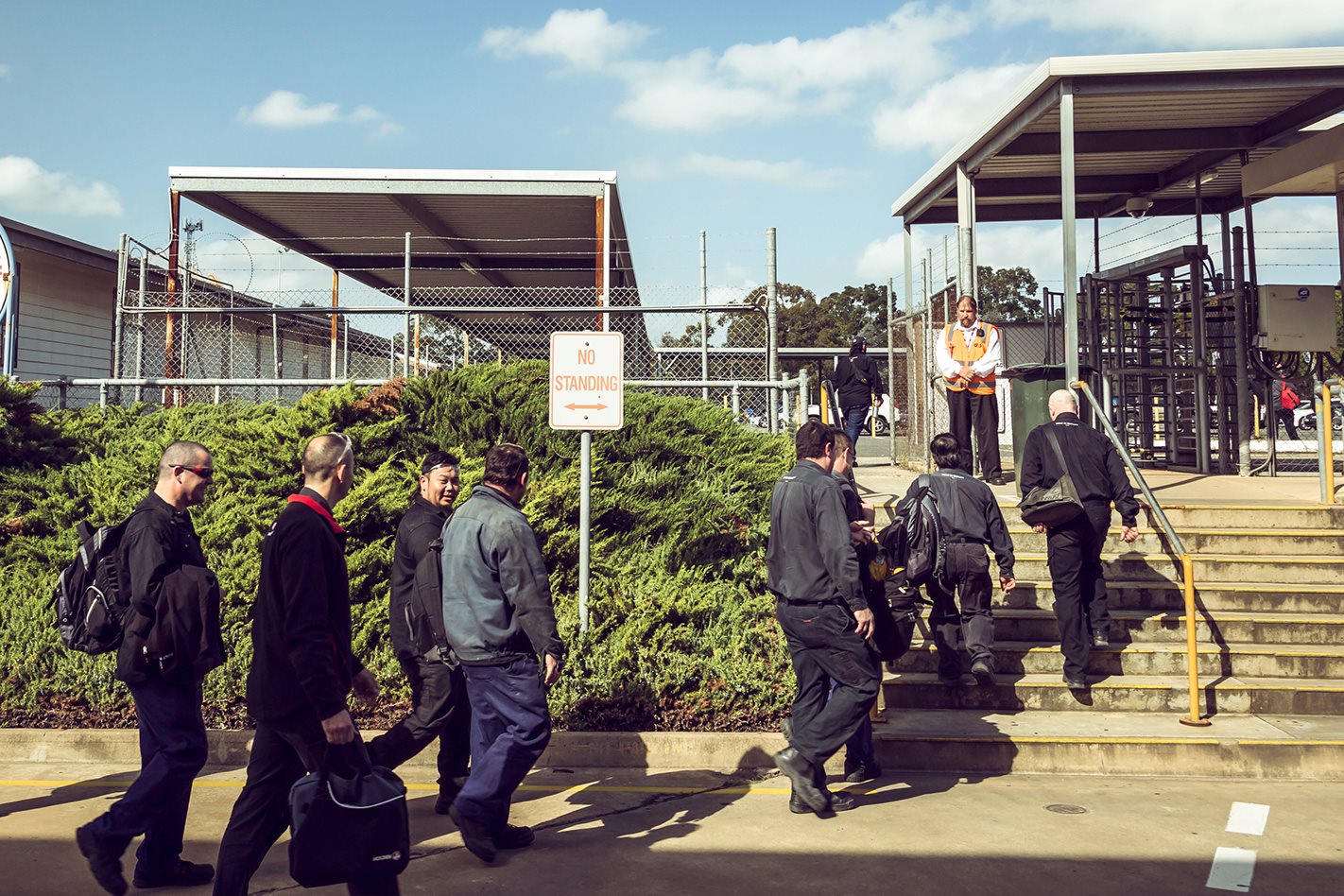THERE is a tree that guards the entrance to Holden’s vast Elizabeth factory on the outskirts of greater Adelaide. It’s a sprawling ghost gum, at least 20 metres tall, that nobody seems to remember being planted. It was just there.
The oldest workers at this factory have spent half a lifetime watching that tree slowly grow, transforming over the decades from a weak and spindly sapling to the stout, thick-trunked thing it is today. There’s not much in the way of notable landmarks in this unremarkable part of Adelaide, with Holden’s facility surrounded by shabby single-storey buildings, a discount grocer and concrete forecourts filled with second-hand goods. And so they had the ghost gum.
In the cruelest of twists, the opposite transformation has been occurring on the other side of the factory gate, only sped-up over the past few years as if it’s being played in fast-forward. Holden’s manufacturing operations have withered and shrunk, production has slowed, numbers rationalised, as three daily shifts became two, and then one.
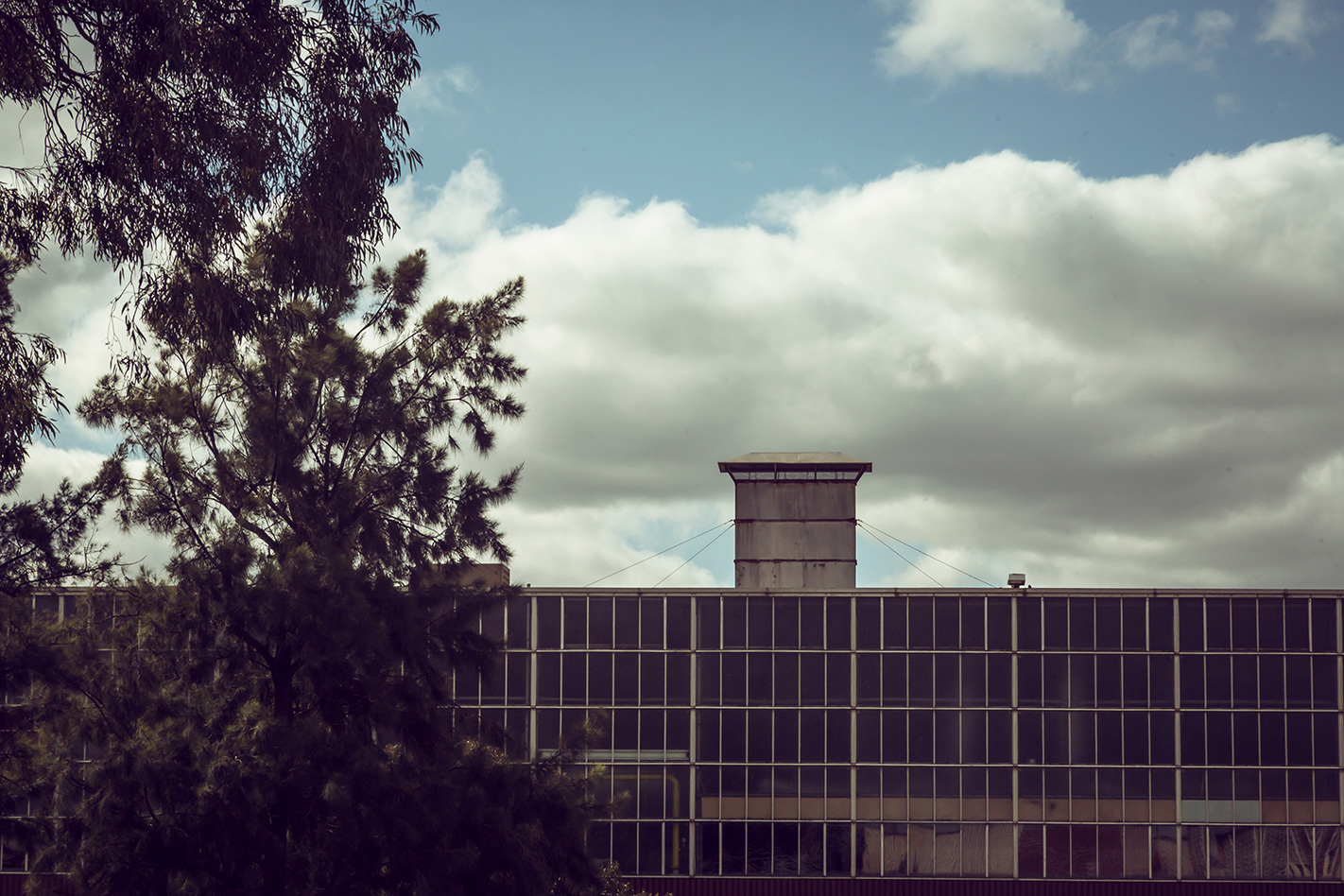
Peter Matthews is one of those workers. A 34-year veteran of Holden’s Elizabeth facility, and a gloriously moustachioed 66-year-old who doesn’t seem the type often overcome with emotion. You can picture him, I’m sure; a big and burly bloke, almost impossibly jovial. He says he’s happily fighting the wrinkles of old age by simply putting on more weight; a kind of pie-based Botox he reckons is working. But there’s no hiding the cracks that appear in his voice when he thinks about driving past that tree for the final time.
“I was telling someone about six months ago how every morning for the past bloody 30 years, when I’d come to work I’d look at that tree and think how amazing it is. I’ve watched it grow,” he says, his voice quivering a little, and dropping in volume.
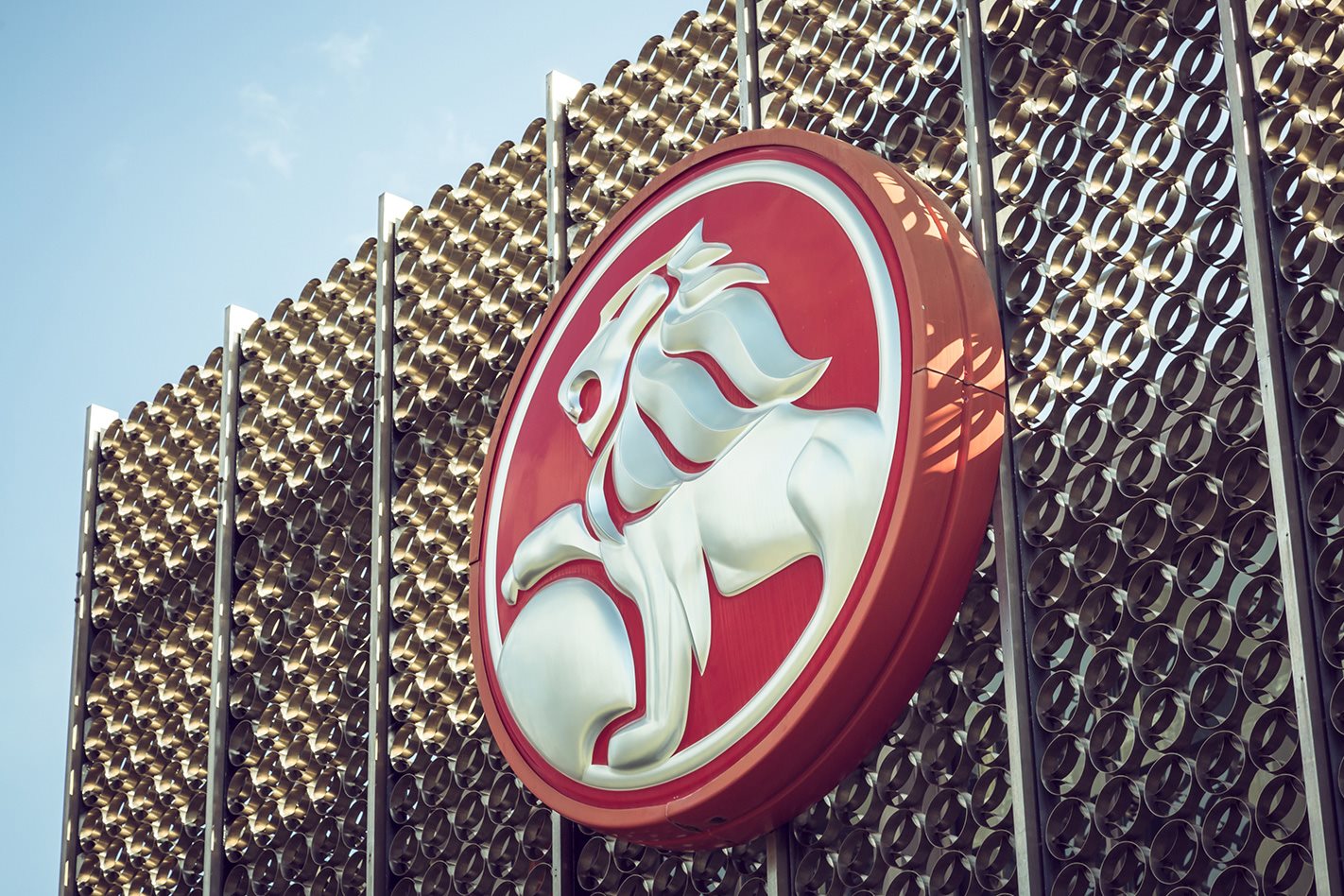
“And that was it. I lost it. Over a tree. But I’d stop all the time and look at it. But that’s come to the end of an era, too.”
The end of an era. We won’t recap the full and bloodied history here, but the battle for Australian automotive manufacturing has been waged and lost. Ford, Toyota and now Holden have all shuttered local operations. We point fingers at the manufacturers themselves, or the government, or even the changing automotive tastes of car-buying Australians because the truth is far less satisfying: the business of building cars here is simply unsustainable.
And so Holden’s factories have fallen like dominos: first went Cruze production on October 6 last year, which has left a vast chunk of the Elizabeth facility sitting silent and empty, already looking like a fenced-off museum exhibit of what Australian manufacturing was once like. Hundreds of workers walked out the front door for the final time that day.
The company’s Fishermans Bend engine factory in Port Melbourne, which had pumped out a staggering 10 million engines since 1936, was next to fall, with 175 more workers laid off.
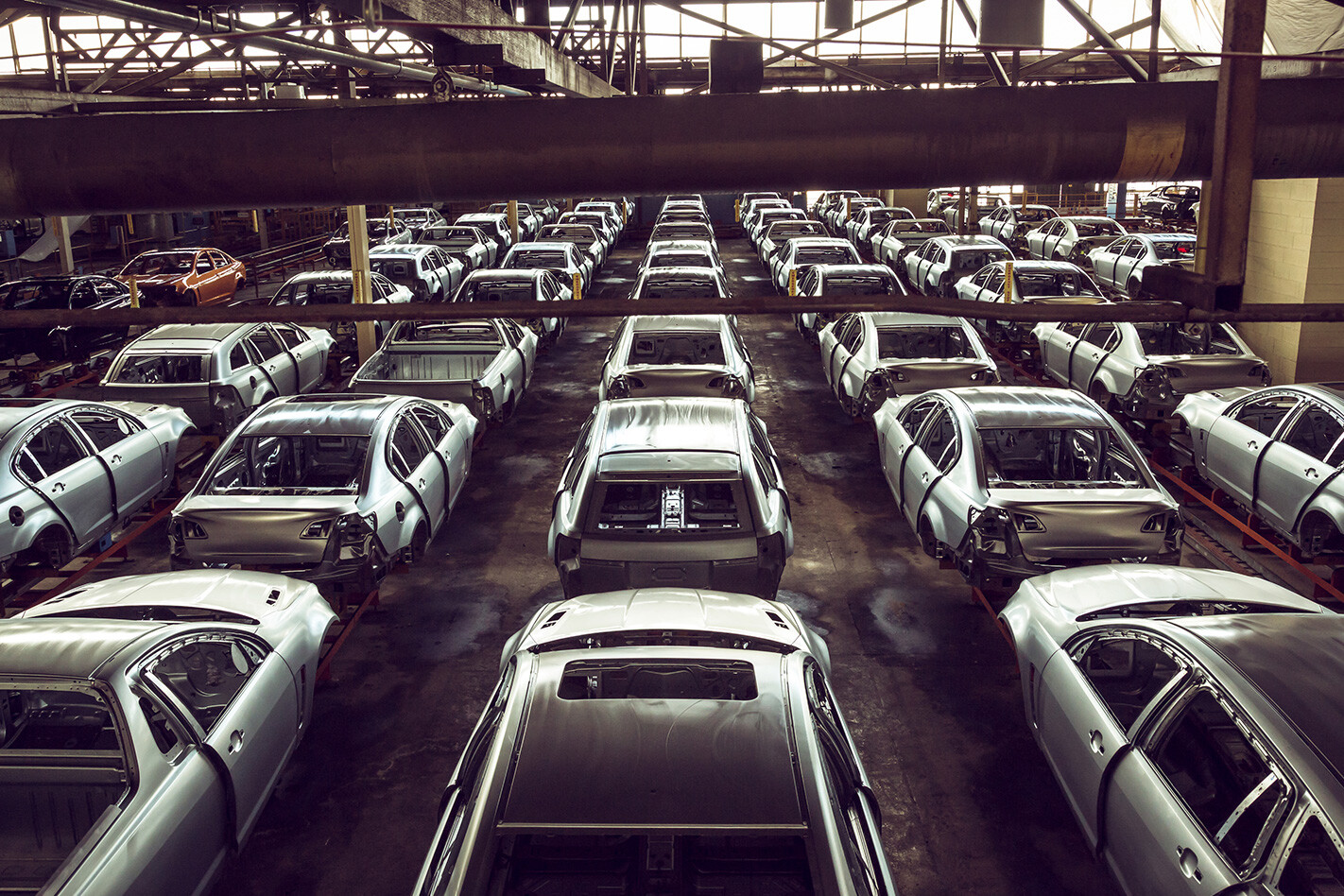
It’s fitting, though, that it should be the Commodore – the company’s most successful nameplate – that’s the last to go. But even it couldn’t hold on forever in its current incarnation, and the lights will be switched off for the final time in Elizabeth on October 20. Another 950-odd workers will finish up that day.
And so big Peter’s emotion is real, but fleeting; forced down with stoicism and replaced immediately by a joke, a way of lightening a mood that would weigh on you constantly if you let it.
“Oh well. I guess I’ll just have to drive over here sometimes and see if I’ve still got visitation rights,” he chuckles.
It’s a scene played out on repeat as we take a final tour of Holden’s massive 123-hectare mega-facility, opened in 1963 and once responsible for producing more than 800 cars a day, but which now churns out just 175 Commodores every 24 hours.
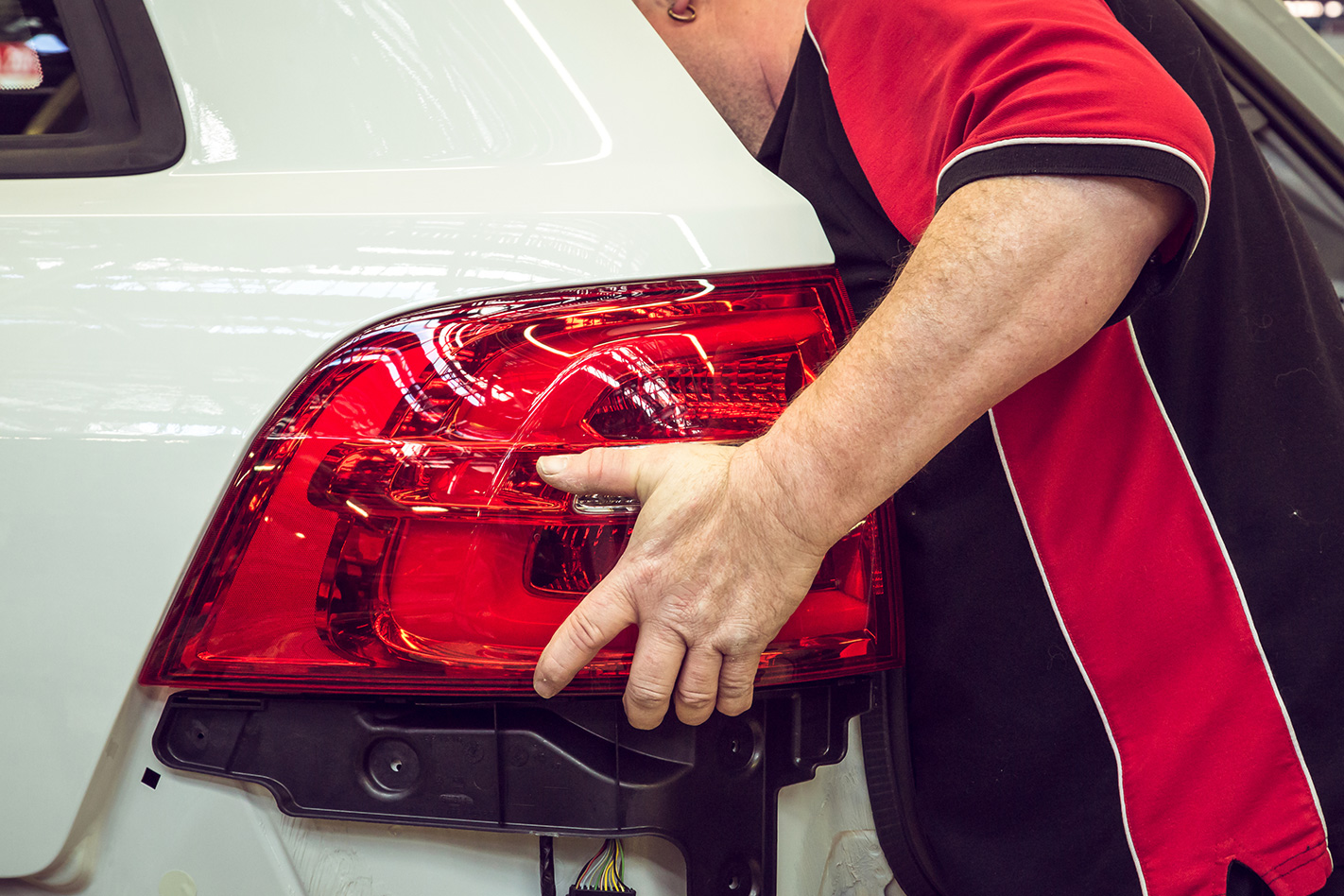
The hard moments are now occurring here daily – the final goodbyes, the kaleidoscope of coloured names on a white board in the Transition Centre that celebrates the people who’ve found new work, the many more, less fortunate names that are yet to appear on it – but there’s an undeniable sense of resilience among the workers still here.
It’s all too easy to sit in Australia’s major cities and either not care, or dismiss: “Holden should have seen Australia’s tastes changing and built different cars; Holden should have introduced stronger export programs; Holden should have made cars that were cheaper, faster, better.” But to do that is not only misguided, it’s callous to the hundreds of men and women whose livelihoods depend on these facilities.
Men and women who will find themselves competing for jobs in a suburb that has a staggering unemployment rate of 32 percent, and in a broader council area where 15.5 percent of people are out of work. It’s testament to Holden’s transition teams that, of the 800 people who have so far left Elizabeth, more than 75 percent have found new jobs. But they’re still not the same jobs, the ones they chose and stuck at for years.
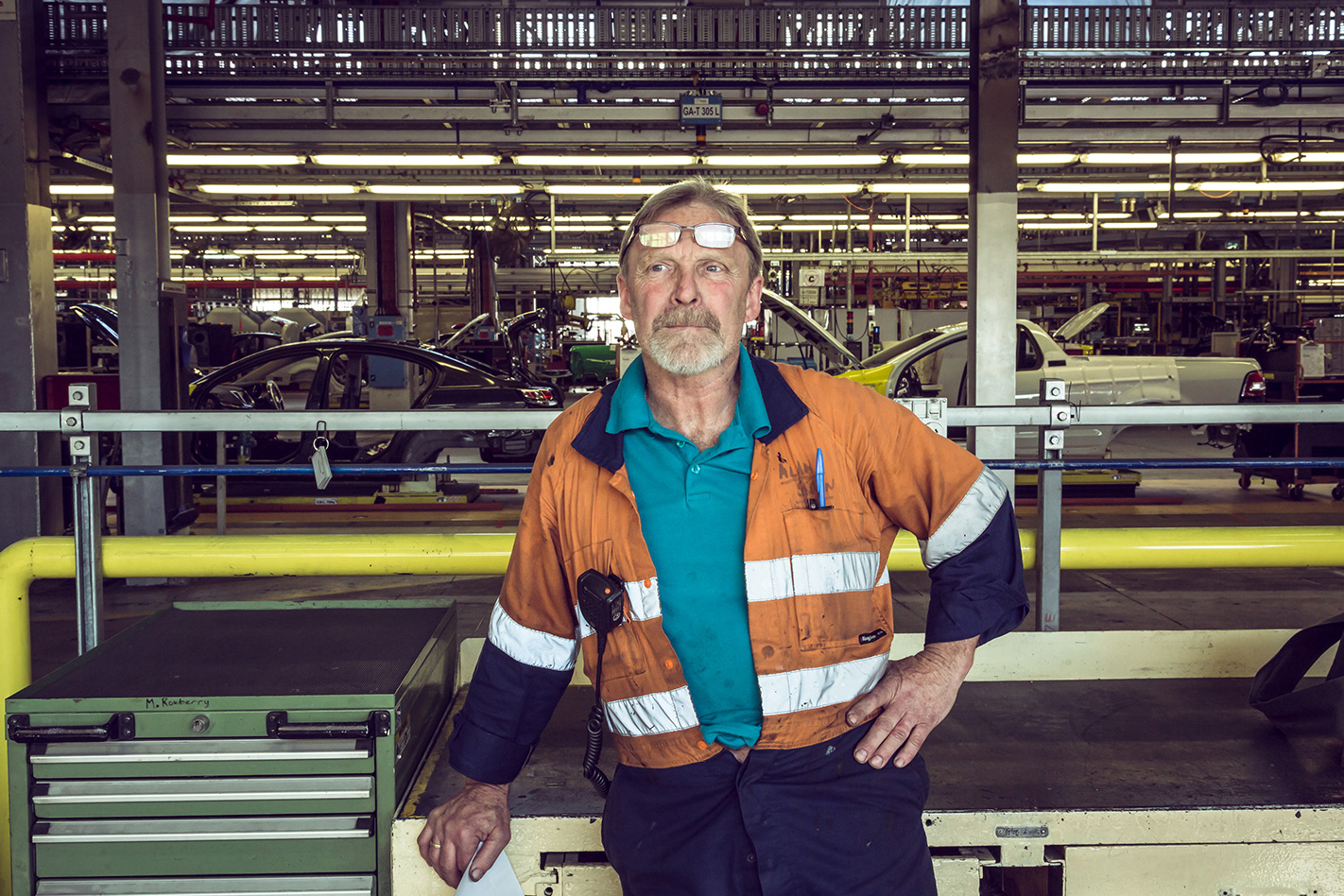
For the people left, though, it’s been more than just work. Plenty of people here count their tenure in decades, not years. It’s their social circle, their support network. Almost every worker we spoke to talked about it being like a big family; one that’s being involuntarily split up.
Perhaps nobody embodies the Elizabeth workers like Tim Lane, a 23-year veteran whose blood isn’t just Holden red, it’s likely high octane. Tim has never owned a car that was not a Holden. Neither had his father, or his grandfather.
“I started at Holden in 1994 as an apprentice electrician. Halfway through that, I started a degree in electrical engineering, and that’s what I’m doing today,” he says.
“My grandpa started back in the Birkenhead days [an earlier factory in Port Adelaide] in the mid-1930s… he left after 40 years. My dad started working at the Woodville plant [also in Adelaide], and he completed 48 years service.
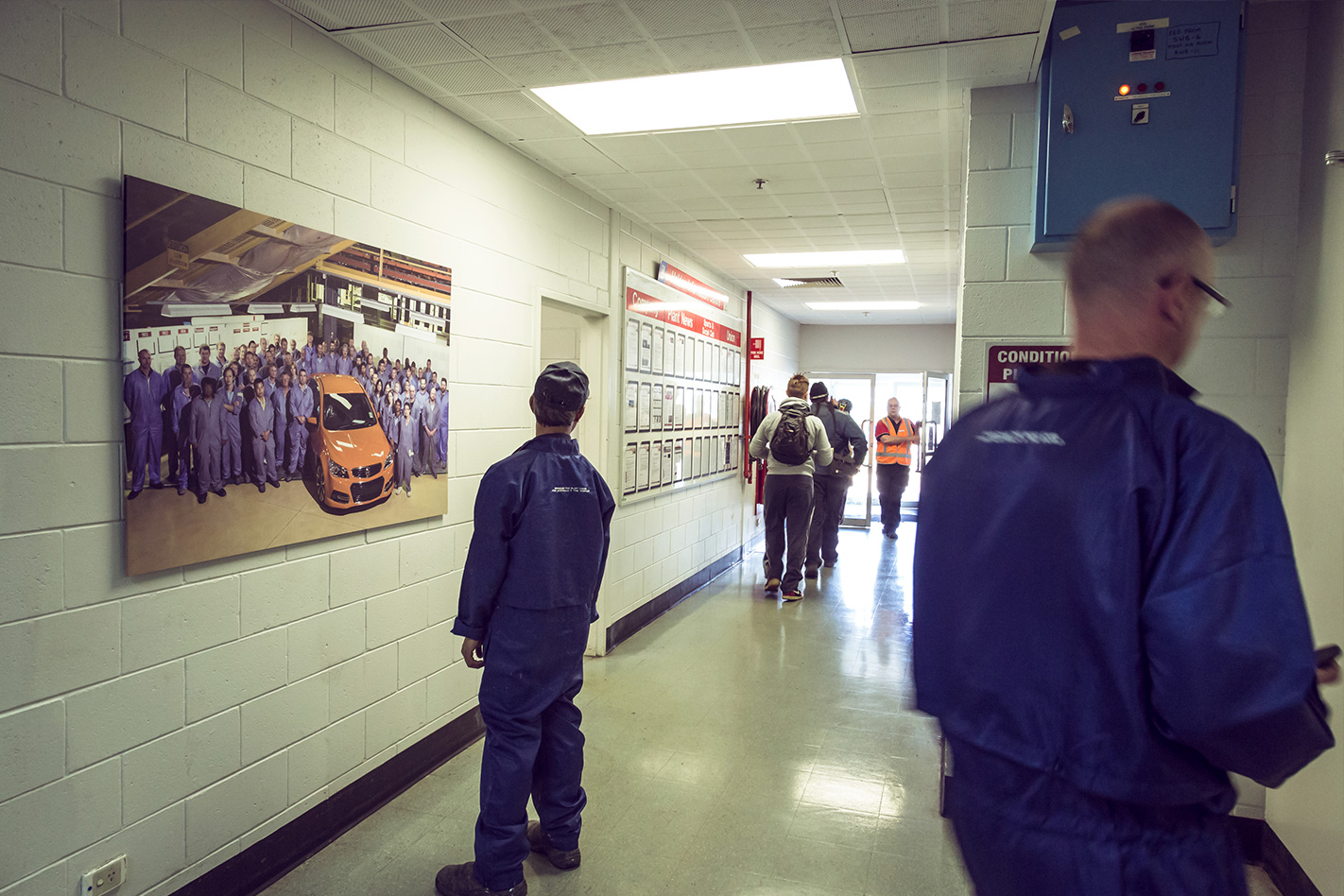
“My grandpa met my nanna, who was a receptionist to two of the directors, so they met here, too. So there’s definitely a family history. I was even conceived in the back of an FB…”
Some of Tim’s fondest memories are of when he and his father would drive to work together in his dad’s FB Holden (yes, that FB Holden). While Tim knows the end has come, his father refuses to believe it.
“I think he’s in denial. He keeps saying “they won’t close, someone will bail them out”. But we’re well past that point now,” Tim says.
“Of course it’s sad; really sad. But I’m trying to stay positive and look to the future.”
Paul Sakovits is the plant’s body shop manager, where he’s worked for the past 23 years. He speaks with a swelling pride about what’s been achieved in this facility, the rolling monuments to Australia’s automotive ingenuity that have been built, trucked away and sold to millions of Aussies over the decades. And exactly what will be lost when it closes.
“It’s a time to savour what we’ve accomplished over this journey,” he says. “We want to go out with our heads held high. We want our last car to be our best. This is our legacy. And we’re very proud of that fact.”
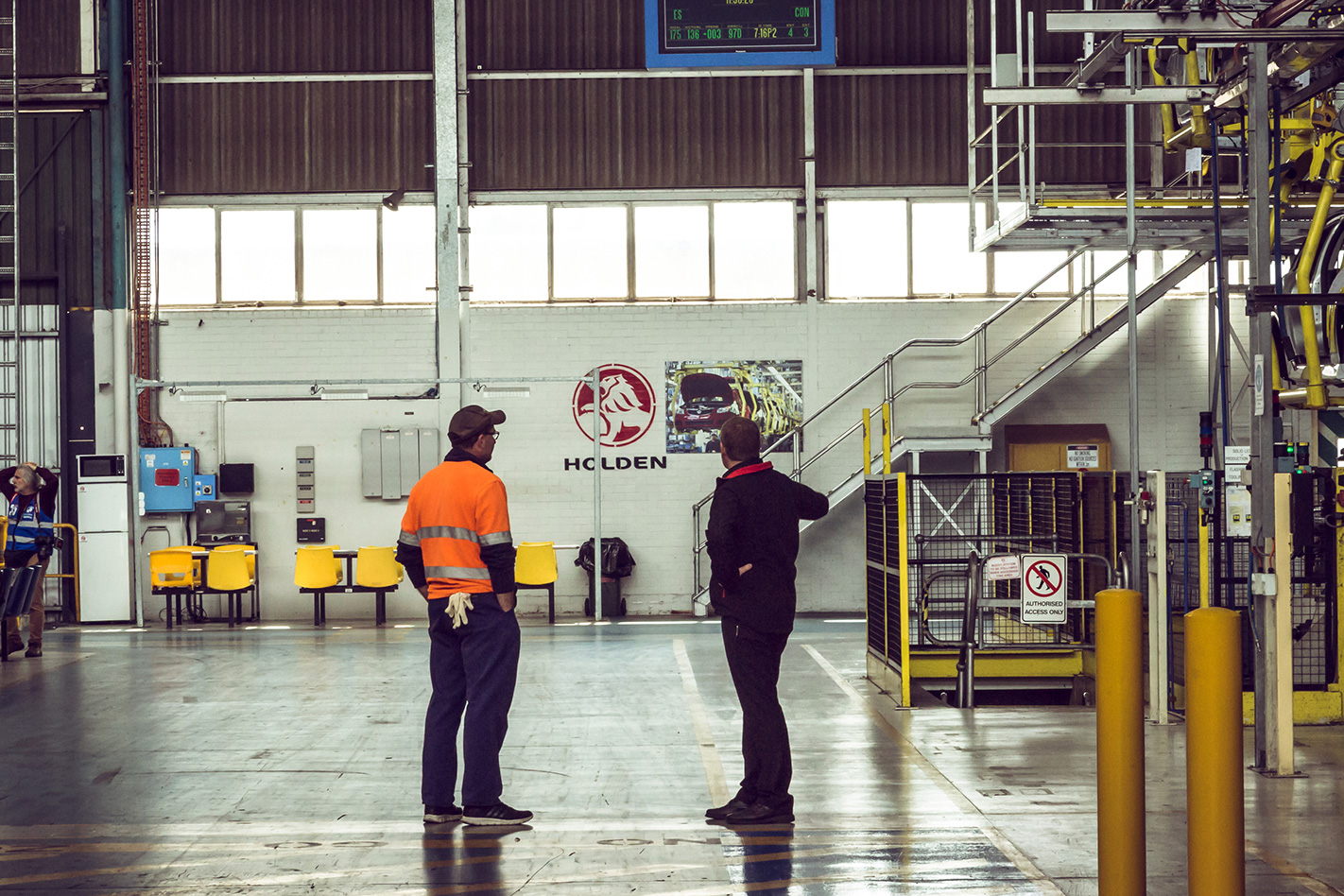
Asked if the people of Australia understand what they’re losing, Paul doesn’t hesitate: “I don’t think people really do understand what it means. The skills, the abilities, the technology that goes into this place. I think we’re losing something that we won’t get back.”
But it’s the next question that allows the emotion simmering just out of sight to surface: what does this organisation mean to you? Paul quickly turns away, his red-rimmed eyes filling slightly. He quietly composes himself for a second or two before turning back to answer the question, his words now running together a little.
“I’m sorry. It’s hard to actually put into words. I mean, having been here 23 years, just the people, how much it means to everyone is one of the things that strikes me,” he says. “I’m amazed at just how dedicated and loyal people are to this place; what it means to them. That’s the biggest thing, when I see how passionate they are, that overwhelms me.
“Obviously everyone is very sad, but on the other hand, for some people it’s a good chance to start a second career.
“But it varies every day, because you start to come to the conclusion that one day you’re going to drive in here and it will be the last time you ever even drive that route to work. Or it’s going to be the last time I see Megan, who I’ve been working with for 20 years. We’re going through all these ‘lasts’. On a day-by-day basis, you’re going through this real rollercoaster of emotions.”

Of all the cars rolling slowly down the lines on the day we visit, the majority are V8-powered, and some of those will wear an unusual stamp. They’re called the Employee Pack cars, which are based on the VFII Reserve Edition, and have been made available to Holden employees at a generous discount. Each will have the staff member’s Holden employee number stamped into the metal, and will have the car’s ‘broadcast sheet’ (the slip of paper that tells the line workers what parts to fit) framed inside, too.
“There’s just so much pride to be a part of it,” says the plant’s manufacturing and engineering manager, Jed Carmen. “There’s been a long history, and I know my 13 years here sounds a long time, but in this place, I’m a relative newbie.
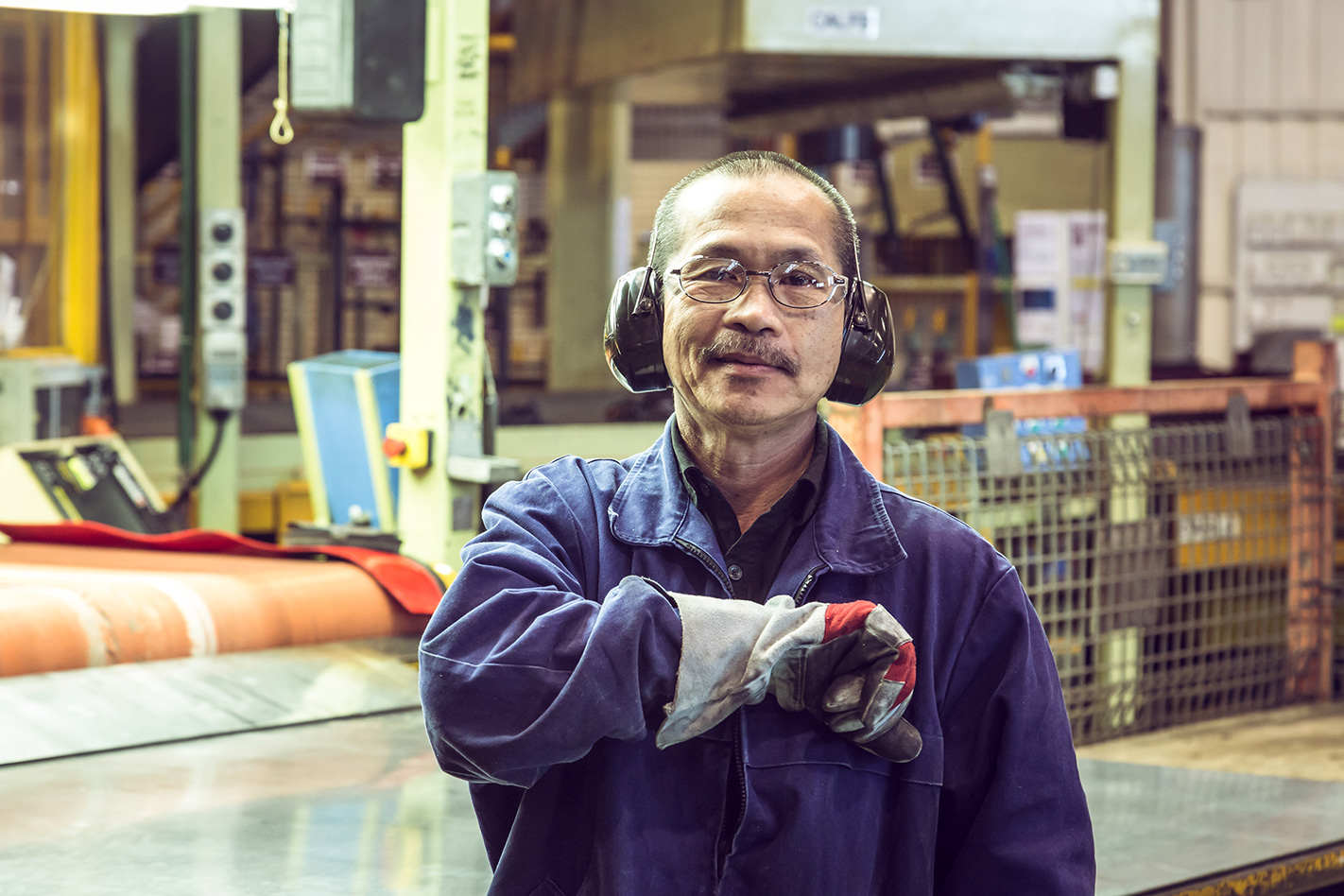
“But to be part of this product, and to be able to drive away in your own car with your own personal stamp on it; that’s such a great way to leave it.”
Those employees will drive out of a gate belonging to a factory that will have likely already been sold. In some of the last Commodores to ever be built. And they’ll pass a sweeping gum that’s been there for as long as anyone can remember. And will be there for some time yet.

